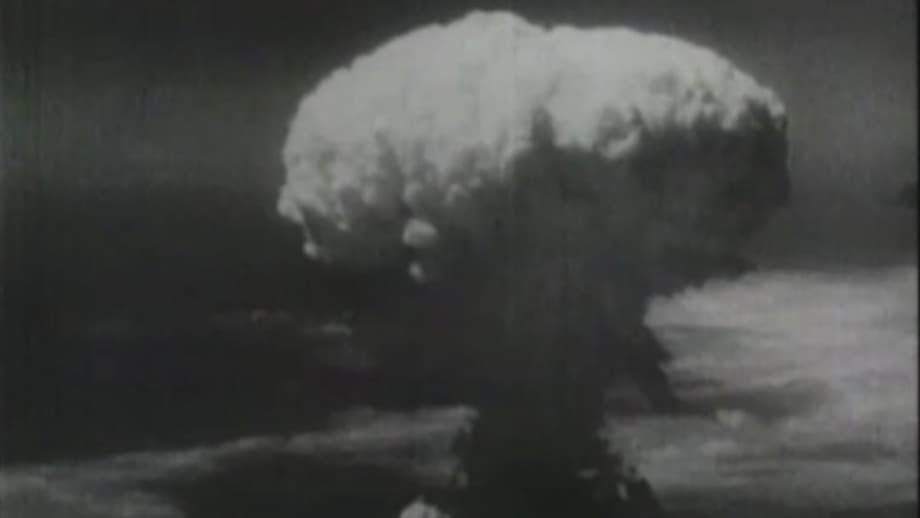The Atomic Bombings: A Turning Point in History
On August 6 and 9, 1945, the world witnessed a new and terrifying form of warfare. The United States dropped atomic bombs on the Japanese cities of Hiroshima and Nagasaki, marking the first and only use of nuclear weapons in conflict. The devastation was immediate and overwhelming: tens of thousands were killed instantly, and many more died in the weeks and months that followed from injuries and acute radiation exposure. The bombings played a decisive role in ending World War II, but they also ushered in the nuclear age, raising profound questions about humanity’s capacity for destruction and the long-term consequences of radiation exposure.
- The Atomic Bombings: A Turning Point in History
- What Happened in Hiroshima and Nagasaki?
- Why Didn’t Radiation Make the Cities Uninhabitable?
- Long-Term Health Effects: What Did We Learn from Survivors?
- How Are Radiation Levels Monitored Today?
- The Legacy of the Hibakusha: Science, Advocacy, and Peace
- Common Misconceptions: Why Are People Still Worried?
- Broader Implications: Nuclear Safety and Preparedness
- In Summary
Today, nearly 80 years later, Hiroshima and Nagasaki are thriving cities, home to over a million people combined. Yet, a persistent question lingers in the public imagination: how can these cities be safe to live in after such catastrophic nuclear attacks? This article explores the science behind radiation, the historical context of the bombings, the health effects on survivors, and why Hiroshima and Nagasaki are as safe as any other city in the world today.
What Happened in Hiroshima and Nagasaki?
World War II was nearing its end in 1945. Germany had surrendered in May, but Japan continued to resist. After the Allies’ demand for surrender went unanswered, the U.S. made the fateful decision to use atomic bombs. On August 6, a uranium-235 bomb nicknamed “Little Boy” was dropped over Hiroshima, instantly killing an estimated 78,000 people. Three days later, a plutonium-239 bomb called “Fat Man” was detonated over Nagasaki, killing about 27,000 instantly. By the end of 1945, the death toll in both cities had risen to over 200,000, including those who succumbed to injuries and radiation sickness.
The bombs were detonated at altitudes of about 600 meters (Hiroshima) and 500 meters (Nagasaki) above ground. This method of detonation maximized the destructive blast and fire effects, but it also had a crucial impact on how radiation was distributed.
Immediate and Residual Radiation: What’s the Difference?
Atomic bombs release energy in several forms: blast, heat, and radiation. The radiation component is divided into two types:
- Initial radiation: Emitted within the first minute of the explosion, this intense burst of gamma rays and neutrons caused acute radiation sickness and death among those close to the hypocenter.
- Residual radiation: This includes radioactive fallout and neutron-activated materials, which can linger in the environment after the explosion.
In Hiroshima and Nagasaki, about 5% of the bomb’s energy was released as initial radiation, and 10% as residual radiation. However, the vast majority of this residual radiation was emitted within 24 hours of the blast. According to the City of Hiroshima, 80% of all residual radiation was released in the first day, and by a week later, the amount had dropped to one-millionth of the initial level. This rapid decay is a key reason why the cities are not radioactive today.
Why Didn’t Radiation Make the Cities Uninhabitable?
Many people assume that nuclear explosions leave behind radioactive wastelands for centuries. This belief is fueled by the fearsome reputation of nuclear fallout and the long half-lives of some radioactive materials. However, the reality is more nuanced and depends on the type of bomb, the altitude of detonation, and the physics of radioactive decay.
The Science of Radioactive Decay
Radioactive decay is the process by which unstable atomic nuclei lose energy by emitting radiation. Each radioactive isotope has a characteristic “half-life”—the time it takes for half of the material to decay. Some isotopes decay in seconds, others in years or millennia. Importantly, isotopes with very long half-lives are less radioactive at any given moment, because they decay more slowly.
In Hiroshima and Nagasaki, the bombs were detonated high above the ground. This meant that most of the radioactive material was dispersed into the upper atmosphere, rather than being deposited on the ground as fallout. About 90% of the radiation was pulled up into the atmosphere and carried away by winds. The most dangerous isotopes, such as iodine-131 and cesium-137, decayed rapidly—within days or weeks. The small amount of neutron-activated material in the ground also decayed quickly, and the lack of a ground-level detonation meant there was little contamination from “neutron activation” of soil and buildings.
By the 1950s, radiation levels in both cities had returned to normal background levels, comparable to those found anywhere else on Earth. Today, measurements show that radiation in Hiroshima and Nagasaki is indistinguishable from natural background radiation, which comes from cosmic rays, rocks, and even the human body itself.
Comparing Atomic Bombs to Nuclear Accidents
It’s important to distinguish between the effects of atomic bombs and nuclear accidents like Chernobyl or Fukushima. In nuclear accidents, reactors can release large amounts of radioactive material directly into the environment, contaminating soil, water, and food supplies for decades. In contrast, the design and detonation altitude of the Hiroshima and Nagasaki bombs meant that most radioactive material was dispersed or decayed rapidly, leaving little long-term contamination.
Long-Term Health Effects: What Did We Learn from Survivors?
While the cities themselves are safe today, the human cost of the bombings was immense. Survivors, known as hibakusha, faced not only the trauma of the blasts but also the long-term effects of radiation exposure. For decades, scientists have studied the health of survivors and their children, providing invaluable data that has shaped global radiation safety standards.
Cancer and Other Health Risks
Research by the Radiation Effects Research Foundation (RERF) and other organizations has shown that survivors exposed to high doses of radiation had increased risks of leukemia and other cancers. Leukemia cases began to rise about two years after the bombings, peaking four to six years later, especially among children. Solid cancers, such as those of the breast, lung, and stomach, increased about a decade after exposure. The risk of cancer was highest for those exposed at younger ages and for women.
Non-cancer effects, including cataracts, thyroid disease, and cardiovascular conditions, were also observed. However, the overall increase in cancer risk was lower than many feared: for solid cancers, the attributable rate due to radiation was about 10.7%, and even for those exposed to the highest doses, the risk was not more than five times that of unexposed individuals.
Genetic Effects and the Next Generation
One of the most pressing questions was whether radiation exposure would cause genetic damage in the children of survivors. Decades of research have found no clear evidence of increased birth defects, cancer, or other diseases in the second generation. Children exposed in utero did have higher rates of certain developmental problems, but those conceived after the bombings have not shown excess disease attributable to radiation.
As noted in a Lancet review, the ongoing follow-up of survivor cohorts continues to inform our understanding of radiation risks, but so far, fears of widespread genetic damage have not been realized.
How Are Radiation Levels Monitored Today?
Modern Hiroshima and Nagasaki are vibrant, bustling cities with populations of 1.2 million and 400,000, respectively. Both cities are closely monitored by Japanese authorities and independent scientific organizations. Radiation measurements are routinely conducted in public spaces, schools, and even soil and water samples. The results consistently show background radiation levels of about 0.1 microsieverts per hour—well within the range considered safe by international standards.
Cleanup efforts after the war included removing debris, treating contaminated soil, and rebuilding infrastructure. Today, there are no restrictions on living, working, or visiting any part of Hiroshima or Nagasaki. Tourists flock to memorials, museums, and peace parks, and the cities have become symbols of resilience and recovery.
The Legacy of the Hibakusha: Science, Advocacy, and Peace
The survivors of Hiroshima and Nagasaki have played a crucial role in advancing scientific knowledge and advocating for nuclear disarmament. Their participation in long-term health studies has provided the foundation for modern radiation protection standards, influencing everything from medical imaging to occupational safety and space exploration.
Beyond science, the hibakusha have been tireless advocates for peace, sharing their stories to warn future generations of the horrors of nuclear war. Their efforts were recognized with the 2024 Nobel Peace Prize awarded to the Japan Confederation of A- and H-Bomb Sufferers Organizations.
As one survivor, Kunihiko Iida, explained in an interview with Science magazine, “We have suffered, but we want the world to learn from our experience so that no one else has to endure what we did.”
Lessons for the World
The research and advocacy of the hibakusha have shaped international policy and public understanding of radiation. Their legacy is seen in the work of organizations like the United Nations Scientific Committee on the Effects of Atomic Radiation and the International Commission on Radiological Protection, which set global safety standards based on data from Hiroshima and Nagasaki.
The bombings also changed the course of history, prompting efforts to control nuclear weapons and prevent their use. As Siegfried Hecker, former director of Los Alamos National Laboratory, reflected, “Let’s keep the horrid images of Hiroshima and Nagasaki in front of us as a stark reminder of what we must learn to avoid.”
Common Misconceptions: Why Are People Still Worried?
Despite decades of scientific evidence, myths about lingering radiation in Hiroshima and Nagasaki persist. Some believe that the cities must still be radioactive, or that survivors’ children are doomed to suffer genetic diseases. These misconceptions are fueled by confusion over the difference between nuclear bombs and nuclear accidents, as well as the complex science of radioactive decay.
In reality, the unique circumstances of the bombings—airburst detonations, rapid decay of dangerous isotopes, and effective cleanup—meant that long-term environmental contamination was minimal. The health effects on survivors were real and severe, but they did not translate into ongoing danger for future generations or for the cities themselves.
Broader Implications: Nuclear Safety and Preparedness
The experience of Hiroshima and Nagasaki has informed global approaches to nuclear safety, emergency preparedness, and environmental monitoring. Lessons learned from the bombings have been applied to managing nuclear accidents, developing protective equipment, and setting exposure limits for workers and the public.
Continuous monitoring, public education, and advances in technology ensure that any potential risks are quickly identified and addressed. The cities’ recovery demonstrates the effectiveness of science, policy, and community resilience in overcoming even the most devastating disasters.
In Summary
- Hiroshima and Nagasaki were devastated by atomic bombs in 1945, causing immense loss of life and suffering.
- Most radiation from the bombs was released in the first minutes and hours, with residual radiation decaying rapidly within days.
- The bombs’ airburst detonations meant little radioactive fallout reached the ground, and cleanup efforts further reduced contamination.
- Today, radiation levels in both cities are comparable to natural background radiation found anywhere on Earth.
- Long-term studies of survivors showed increased risks of cancer and other diseases, but no evidence of genetic effects in subsequent generations.
- The hibakusha’s experiences have shaped global radiation safety standards and inspired advocacy for peace and nuclear disarmament.
- Hiroshima and Nagasaki are now thriving, safe cities, serving as powerful reminders of both the horrors of nuclear war and the resilience of the human spirit.












